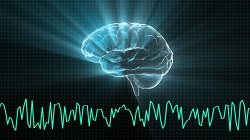Can the blind really hear better?
A vast amount of neuroimaging evidence indicates the occurrence of non-visual input processing in blind individuals. To provide a platform for further investigation into the nature of this brain activity, the EU-funded COcOAB project used magnetoencephalography (MEG). This helped determine the non-visual role in the occipital regions (visual cortex) of the brain. In addition, the researchers will determine if there were any interactions between this region and other functional networks to participate in non-visual functions. As project coordinator Dr Olivier Collignon, explains, “this will address whether the visual cortex is integrated into new functional networks to serve non-visual functions in blind humans.” Novel paradigm MEG assessed brain wave activity in the neurons. Tests were carried out at the Center for Mind/Brain Sciences, CIMeC, University of Trento, Italy. A refinement of a previous protocol, some adjustments were made to the original test conditions to suit the now tested population of 20 sighted individuals. The MEG session starts with auditory threshold assessment to determine the amplitude generating approximately 50 % detection rate of stimuli. “The idea is that any variability in perception can be attributed to modulations in the brain states of the subject,” explains Dr Valeria Occelli, fellow leading the research. During the main task, results recorded were from stimuli – sounds at threshold, those above threshold and no sounds. Participants have to indicate (via button presses) whether they heard the sound or not. “Unlike the original study, our experiment has a trial structure. These included the use of speech rather than white noise bursts that we believe are more ecologically valid,” emphasises Dr Occelli. Results platform a solid foundation for further investigation Previous studies showed that the alpha brainwave activity prior to onset of the stimulus influences the detection of the imminent near-threshold stimulus and therefore has functional relevance for performance of participants. Pilot data collected from the sighted participants provided evidence that this is a promising paradigm to assess the activity prior to stimulation. Data collection on blind participants is currently ongoing and the collaboration between the host university, the University of Trento, Italy has been extended by a year to complete the study. ”Development and validation of the new paradigm were more costly than previously anticipated in terms of both time and resources. Moreover, programming training for the task took up a lot of time,” explains Dr Occelli. Sights set for continued research direction COcOAB aims to use the future data from blind subjects to support the view that the function of the visual cortex changes on onset of blindness. Moreover, the effect of age of onset and or duration of visual deprivation can be determined. Dr Olivier Collignon sums up, “This will allow us to gather unprecedented information about the functional relevance of non‐visual activity in the occipital cortex of blind individuals.” The COcOAB project stands to prove that the visual cortex is not specifically for visual processing and plays a part in overall perception of the environment in blind and visually deprived individuals. “Confirmation of this hypothesis would be a striking demonstration that occipital regions in the blind (where auditory inputs converge) are dynamically integrated in functionally relevant, task-specific processing, rather than being merely co-activated,” adds Dr Occelli.
Keywords
COcOAB, blind, visual cortex, magnetoencephalography (MEG), non-visual functions



